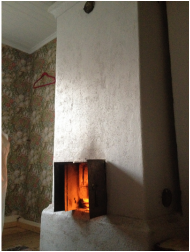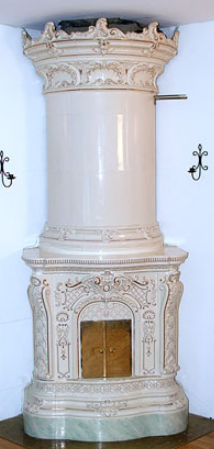 Utilising thermal mass to make wood-based heating is getting very popular with rocket mass stoves, etc. Here in the colder climates this technology has existed since Neoglacial and Neolithic periods. I just came in at 2pm and our 100yr old stove is as warm as a typical radiator would be, with the house at a comfortable 20°C and we only lit a very small fire over 12 hours ago. It's 1 °C outside. I just fired it up again and this small fire will see us through until tomorrow night. Various models exist in older homes here, often very beautifully crafted. There is a knack to learning it's temperaments, but they are highly efficient. Often they sit as a ornate feature whilst electric radiators do the work these days, sad really. One thing to be sure of is not to close the damper until the fire is totally out, otherwise you risk carbon monoxide poisoning which still kills a lot of folks every year. These types of stove are usually made of masonry such as brick (firebrick), tile, stone, stucco, or a combination of materials, rather than steel or cast iron. It is freestanding, and usually requires special support to bear its weight. It consists of a firebox and heat-exchange channels or partitions that provide additional surface area. These absorb heat from the hot exhaust gases before the gases exit into the chimney. The fire in a masonry heater burns much hotter than in a metal stove. Very hot fires reduce emissions significantly. When not being fired, the connection from the masonry heater to the chimney sometimes has a damper to prevent heat from escaping up the chimney; the heat is then radiated from the masonry.
0 Comments
Leave a Reply. |
Details
Like us on FB Below for regular updatesStay up to date with customized updates you want to receive
Upcoming coursesArchives
December 2016
Categories
All
|



 RSS Feed
RSS Feed